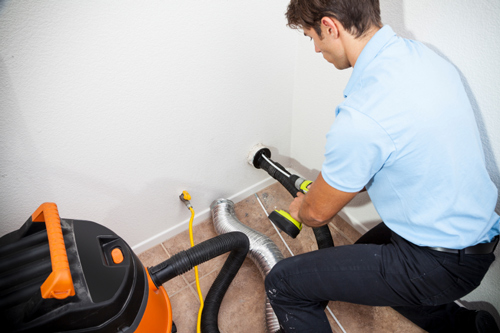 Just like building technologies, maintenance practices are constantly changing and should be carefully monitored. One of the home upkeep services currently growing in popularity is duct cleaning. Increasing awareness of allergies, air quality, and perceived risks associated with clogged vents is driving concern and action on the part of homeowners. Mechanical contractors, builders and industry suppliers need to recognize this, and choose materials designed to ease access to their HVAC systems.
Just like building technologies, maintenance practices are constantly changing and should be carefully monitored. One of the home upkeep services currently growing in popularity is duct cleaning. Increasing awareness of allergies, air quality, and perceived risks associated with clogged vents is driving concern and action on the part of homeowners. Mechanical contractors, builders and industry suppliers need to recognize this, and choose materials designed to ease access to their HVAC systems.
Consider the reason you install a ventilation unit in a home: to move air from one place to another. The long term buildup of dust, mold and debris inside vents and ducts can eventually start to restrict airflow. That causes attached machinery like dryers, furnaces, or air conditioners to operate inefficiently. It may also increase the pollutants in a home and degrade air quality. In the case of a dryer vent, lint can build up and create a significant fire hazard. That’s why more and more people are demanding regular cleaning.
Traditionally, ducts and vent hoses are fixed in position. That means cleaners often have to access them through openings in walls, ceilings, roofs, or soffits. Those openings are usually covered with cap, diffuser, or hood. When you install those items, it’s good to think about how someone will take them off in the future. Not all hoods, caps and diffusers provide the same level of access.
Termination vents that rely on caulking to seal and do not come apart will require careful cutting each time access to the duct is required. That process is time consuming, and can put the underlying building envelope at risk, increasing the potential for leaks. Removing a metal vent cover can lead to warping, denting or scratching.
In some jurisdictions, any disturbance to the building envelope could void the warranty and leave the owners and contractor unprotected. A well-designed vent will include a removable hood. That means a homeowner or contractor can access the duct behind it without having to disturb the original seal established with the building envelope. A modern plastic vent comprised of durable resins will also avoid denting and warping, while hiding unsightly scratches. Plastic’s lightweight is just another reason it’s the obvious choice for convenient vent cover removal and reinstallation.
Small details like these are what help make a home more livable. As builders and engineers, the decisions you make on seemingly simple components can help separate the great from the good.



